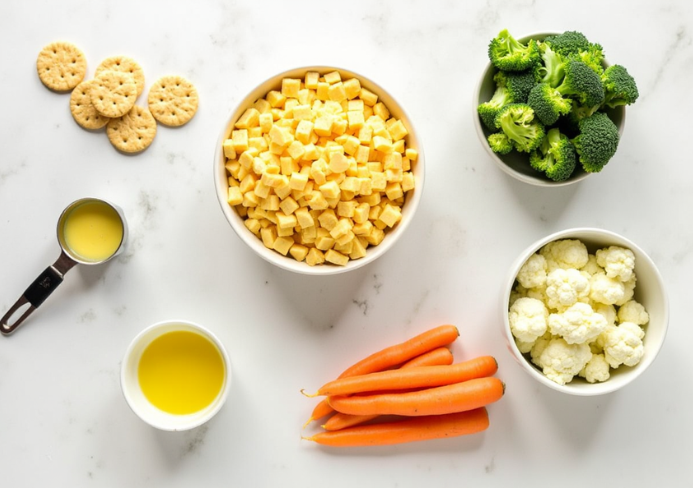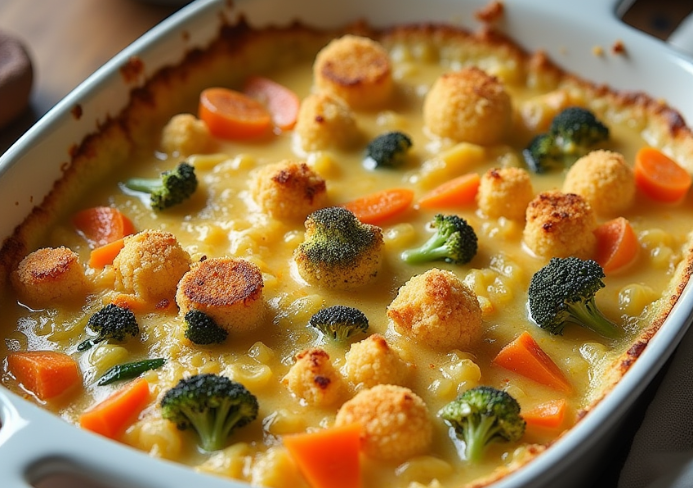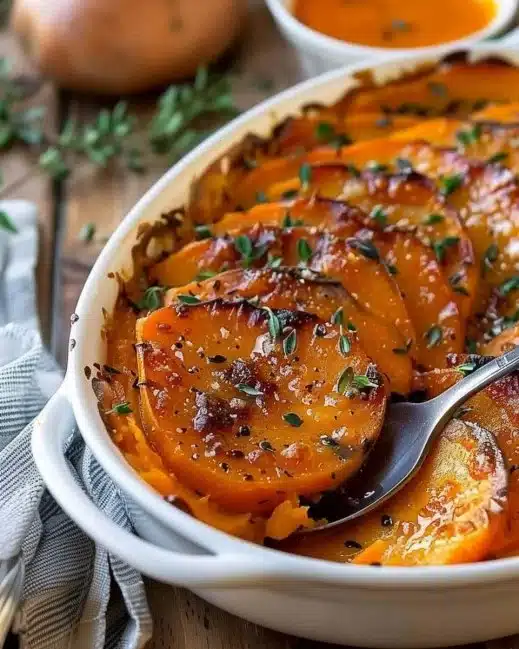The Ultimate Guide to Vegetable Casserole
Vegetable casserole is the perfect marriage of comfort, convenience, and nutrition. Whether you’re feeding a family, preparing a dish for a potluck, or looking for a make-ahead meal, this one-dish wonder brings hearty flavor and flexibility to your kitchen. It’s also ideal for using up leftover vegetables and transforming them into something warm, creamy, and satisfying.
Table of Contents
Not only is a vegetable casserole simple to make, but it’s also highly customizable to fit dietary preferences like vegetarian, low-carb, or gluten-free. Plus, it’s a great way to sneak in more veggies for picky eaters. When choosing your base ingredients, consider whether you want to use frozen or fresh vegetables — both have pros and cons. If you’re opting for fresh, you’ll need to blanch them first to soften and preserve texture. Learn how to properly blanch vegetables before assembling your casserole to ensure the best consistency and flavor.
Another key decision lies in your cheese choice. While Velveeta is popular for its creamy melt and nostalgic flavor, some prefer natural alternatives like cheddar, Monterey Jack, or homemade cheese sauce. If you’re curious about the nutrition of processed cheese, here’s a good breakdown of Velveeta cheese nutritional value to help guide your decision.
Why You’ll Love Vegetable Casserole
- Quick and easy to prepare
- Great for meal prep and leftovers
- A hit at holidays and potlucks
- Fully customizable with any veggies or cheese
- Kid-friendly, budget-friendly, and satisfying
Common Vegetables to Use
You can mix and match vegetables based on availability and season. Popular choices include:
- Broccoli, cauliflower, and carrots
- Zucchini and yellow squash
- Green beans, peas, and corn
- Bell peppers and onions
- Spinach or kale (sautéed or blanched)
For best results, aim for around 9 cups of chopped vegetables — whether fresh or frozen.
Fresh vs. Frozen: Which Is Better?
Both options work well, but there are trade-offs:
- Frozen vegetables are pre-washed, chopped, and partially cooked. They save time and reduce prep work.
- Fresh vegetables offer brighter flavors and a crisper bite — but require blanching before baking.
- Use a mix of both to enjoy convenience and taste.
Cheese and Sauce Options
Cheese adds richness and binds the ingredients together. While Velveeta is often used, other great options include:
- Cheddar, Parmesan, or mozzarella
- Vegan options: cashew cheese or dairy-free cream sauce
- Homemade béchamel or white cheese sauce for a gourmet touch
Texture and Toppings
A crunchy topping brings the dish together. Some popular choices:
- Crushed Ritz crackers (classic choice)
- Panko breadcrumbs or crushed cereal (for crunch)
- Chopped nuts like pecans or walnuts (great for keto)
- Gluten-free breadcrumbs for dietary needs
Mix toppings with a bit of melted butter for golden, crisp results.
Tools You’ll Need
- 9×13 inch baking dish (glass or ceramic preferred)
- Mixing bowls
- Knife and cutting board (for fresh veggies)
- Cheese grater (if using block cheese)
- Aluminum foil (if needed to prevent over-browning)
Here’s a guide to choosing the right casserole dish to ensure even baking and easy serving.
Step-by-Step Classic Vegetable Casserole Recipe
Ingredients:
- 3 cups frozen broccoli
- 3 cups frozen cauliflower
- 3 cups frozen carrots
- 16 oz Velveeta, sliced or cubed
- 1 sleeve Ritz crackers, crushed
- ¼ cup melted butter

Instructions:
- Preheat oven to 350°F (175°C).
- In a large microwave-safe bowl, combine the vegetables and microwave for 12–15 minutes, until warm.
- Transfer to a greased 9×13 baking dish.
- Evenly spread Velveeta over the vegetables.
- In a bowl, mix crushed crackers with melted butter.
- Sprinkle the cracker topping over the cheese layer.
- Bake for 30–45 minutes until the top is golden and bubbly.
- Let cool for 5 minutes before serving.
Delicious Variations to Try
- Vegan version: Swap out dairy for cashew cheese or plant-based mozzarella.
- Low-carb version: Use cauliflower, zucchini, and green beans, topped with crushed almonds.
- Protein boost: Add cooked quinoa, tofu, or even shredded chicken.
- Global twist: Add curry powder for an Indian-inspired take or cumin and black beans for a Tex-Mex feel.
Serving Suggestions
Serve your vegetable casserole as:
- A hearty side dish with roasted chicken or meatloaf
- A vegetarian main course with a side salad or grain
- A lunch meal with soup or bread on the side
Great pairings include:
- Roasted meats
- Garlic bread
- Red or white wine, depending on cheese used
Storing and Reheating
- Refrigerator: Store leftovers in an airtight container for up to 4 days.
- Freezer: Freeze fully baked portions wrapped in foil for up to 2 months.
- Reheating: Use the oven or microwave. Reheat in oven at 350°F covered in foil, then uncover to crisp the top.
Common Mistakes to Avoid
- Overcooking the vegetables: They’ll turn mushy during baking.
- Skipping the blanch step for fresh vegetables.
- Using watery vegetables like tomatoes without draining.
- Uneven cheese melting: Spread cheese evenly across the top.
FAQs: People Also Ask
Can I make this casserole in an aluminum foil pan?
Yes, foil pans are convenient for travel or potlucks. Just be sure to place them on a baking sheet for stability.
What are the five components of a casserole?
Typically: protein, vegetables, starch, sauce, and topping. In vegetable casseroles, veggies often replace the starch.
Can I use raw vegetables?
You can, but the texture may be too firm or release excess moisture. Blanching is recommended.
How do you thicken a watery vegetable casserole?
Add a spoonful of flour or cornstarch to the sauce, or drain veggies before layering.
Can I make it ahead and bake later?
Absolutely. Assemble the casserole, cover, and refrigerate for up to 24 hours before baking.
Final Thoughts
A vegetable casserole is one of the most versatile, delicious, and comforting dishes you can make. Whether you’re serving a crowd or meal prepping for the week, it offers a balance of flavor, nutrition, and simplicity. Don’t be afraid to experiment with vegetables, cheeses, and toppings. Once you master the base, the possibilities are endless.
PrintThe Ultimate Guide to Vegetable Casserole
- Total Time: 50 minutes
- Yield: 6 servings
Description
This easy Velveeta vegetable casserole combines tender frozen veggies with creamy cheese and a crispy Ritz cracker topping. Perfect as a comforting side dish or a simple weeknight main!
Ingredients
- 3 cups frozen broccoli
- 3 cups frozen cauliflower
- 3 cups frozen carrots
- 16 oz Velveeta cheese, sliced or cubed
- 1 sleeve Ritz crackers, crushed
- ¼ cup melted butter
Instructions
- Preheat oven to 350°F (175°C).
- In a large microwave-safe bowl, microwave the frozen vegetables for 12–15 minutes, until hot and thawed.
- Transfer vegetables to a greased 9×13-inch baking dish.
- Distribute the Velveeta cheese evenly over the vegetables.
- In a separate bowl, mix crushed Ritz crackers with melted butter.
- Sprinkle the cracker mixture evenly over the cheese layer.
- Bake for 30–45 minutes, until the top is golden and bubbly.
- Let rest for 5 minutes before serving.
Notes
You can use fresh vegetables if preferred—just steam them until fork-tender before assembling. Add cooked chicken for a heartier version.
- Prep Time: 15 minutes
- Cook Time: 35 minutes
- Category: Casserole
- Method: Baking
- Cuisine: American







